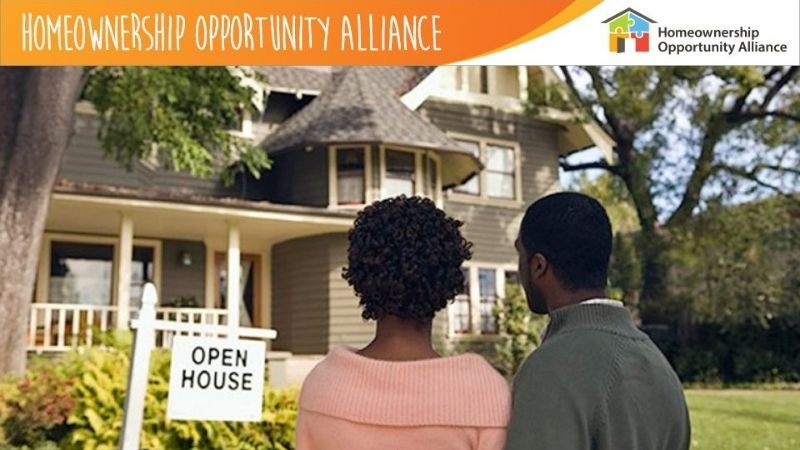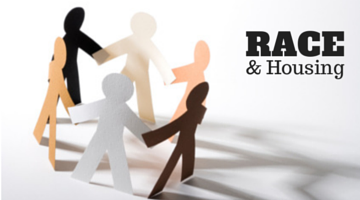What is the Homeownership Opportunity Alliance?
Guest Blog by Allie Gaddis, Strategy and Impact Manager “We all do better when we all do better” is a phrase we heard over and over in 2020. The...

From the outside, buying a home can sometimes look easier than it is. In theory, it’s straightforward enough – provide the needed documents, follow all the requisite steps, meet all the requirements, and you’ll receive a loan and buy a home. In reality, it’s not quite that simple. And sometimes bias creeps into various parts of the process.
The Fair Housing Act was passed in 1968 and was intended to protect people from discrimination while engaging in housing-related activities, such as buying a home or seeking a mortgage. The Fair Housing Act prevents discrimination based on race, color, national origin, religion, sex, familial status, or disability.
While this law was passed over 50 years ago, there is still much work to be done. Homeowners across the country still suffer from discriminatory practices and bias in the real estate and mortgage lending fields. Examples of this include racial steering, lending discrimination, “love letters,” and appraisal discrimination. Let’s take some time to learn a bit more about these issues.

Steering is when an individual is “steered” toward or away from a home or neighborhood based on a protected characteristic. Racial steering has long contributed to the further segregation of neighborhoods and cities. And while the practice is illegal, recent reports and studies have shown that steering has actually increased over time.
During studies, testers of color have been repeatedly steered toward areas with higher pollution, higher violent crime rates, worse schools, higher poverty rates, and lower-quality homes than their White counterparts. An audit conducted by the Urban Institute in 2012 also found that Black and other minority homebuyers were consistently shown fewer options and provided less information on homes than White homebuyers with similar qualifications.
One challenge that faces researchers is that, over time, it appears that those who violate housing laws are becoming more skilled at evading detection. For example, a real estate agent may intentionally show up late to an appointment to show someone a home, in an attempt to steer them away from a neighborhood. This would generally have the effect of tying the homebuyer’s negative emotions regarding the late appointment to the neighborhood itself, deterring them from buying a home.
Another form of bias in housing is called "source of income discrimination." This is when someone’s lawful income is rejected when attempting to rent or buy a home. Lawful income can include wages, pensions, unemployment insurance, Social Security Disability Insurance (SSDI), Supplemental Security Income (SSI), and veteran’s benefits.
One form of income that is not considered lawful income under federal fair housing laws is Section 8 vouchers. That means landlords can refuse to rent to households with Section 8 vouchers purely based on their use of the voucher.
However, several cities and states have enacted laws and ordinances to make it illegal for landlords to refuse housing based solely on the use of Section 8 vouchers by applicants. Currently, Minneapolis is the sole city in Minnesota with an ordinance protecting Section 8 income.
Buyer “love letters” to sellers have become increasingly common in today’s tight housing market because buyers want to do everything they can to increase the chances of their offer being accepted. "Love letters" in real estate are letters that prospective buyers write to sellers to describe why their offer should be chosen over someone else. The letters are typically personal descriptions of who the buyers are and how they hope to live in the home. However, this can lead to ethical issues for buyers and those representing them.
Imagine a buyer writing a long, descriptive piece about their dreams for their home. The letter might state something like "We dream of our children running down the stairs to find presents under the Christmas tree and their father dressed as Santa Claus." From even just that sentence, we can infer that the individual has a family and a husband and that there’s a good chance they are Christian. Compare this with a family that may describe gathering around the dinner table for Passover or Eid.
These love letters create another opportunity for bias—conscious or unconscious. A seller might feel moved by a buyer of their own faith or who has a similar family composition. If a seller chooses any buyer over the others because of their implied religion, familial status, or race, they could be breaking fair housing laws.
As a result, some real estate offices refuse to consider love letters if they arrive with the offer package. The National Association of Realtors has issued a warning to its members about the possible ramifications of allowing love letters. The state of New York has banned them altogether. It’s becoming more and more common to consider love letters to be more risk than they’re worth.

You would think that home appraisals would be based on the condition of the home, the neighborhood, and the features of the home. But discrimination in home appraisals is alive and well. Many Black homeowners report low appraisals of their homes when they want to refinance or sell – frequently tens of thousands of dollars too low. They often see their estimates jump when they ask a White friend or acquaintance to stand in for the appraisal. Sometimes the estimates are more than double what the homeowner was originally offered.
Homes in historically Black neighborhoods are consistently valued at lower rates than those in White neighborhoods. A study by the Brookings Institution estimates that devaluing has caused $156 billion in cumulative losses for Black families as of 2018, exacerbating the wealth gap between White and Black homeowners.
Another form of bias in real estate comes in the form of mortgage loan discrimination. This has been going for as long as people have been lending money for houses, and the statistics are bleak: According to an analysis of 2020 data from the Home Mortgage Disclosure Act, Black applicants were denied mortgages 80% more often than White applicants. In fact, simply living in a majority-Black zip code could increase the likelihood of someone’s mortgage being denied.
Part of this is due to predatory lending by institutions or a lack of credit; part of it is due to lenders making decisions based on inferring race based on someone’s name, or by asking potential buyers for their race outright, even though it’s not required for a mortgage application. An over-reliance on credit scores and histories has long been shown to disadvantage communities of color.
LGBT homebuyers of all races are also impacted by lending discrimination. According to a 2019 study published in the Proceedings of the National Academy of Sciences, gay couples are 73% more likely to be denied a mortgage than heterosexual couples with the same financial worthiness. When same-sex couples are approved for a loan, they pay 0.2% more in interest and fees than different-sex couples. Read more on LGBT housing issues in a recent blog from our CEO Chris Coleman.

Even though the Fair Housing Act has led to a decrease in some types of discrimination over the years, many other forms persist. There are several positive steps being taken toward combatting the housing crisis at the federal level in 2021, but there is more work to be done to combat the enduring effects of bias in real estate.
In Minnesota, the Homeownership Opportunity Alliance is one group that's collaborating to end these harmful practices. The Alliance is made up of 150+ real estate professionals, lenders, non-profit agencies (including Twin Cities Habitat), and government organizations working to tackle housing disparities from every angle. Among other top priorities, the Alliance is working to promote Fair Housing practices among real estate professionals and debunk industry myths, such as the perceived benefits of buyer love letters. Check out our recent blog about the Homeownership Opportunity Alliance to learn more.
Your gift unlocks bright futures! Donate now to create, preserve, and promote affordable homeownership in the Twin Cities.

Guest Blog by Allie Gaddis, Strategy and Impact Manager “We all do better when we all do better” is a phrase we heard over and over in 2020. The...
-3.jpg)
This blog has been updated to include information about a recent Twin Cities Habitat event. On Thursday, October 7, Twin Cities Habitat hosted the ...

You may know that the Twin Cities often sits near the top of many quality of life measures, including lists related to healthcare, leisure, and...